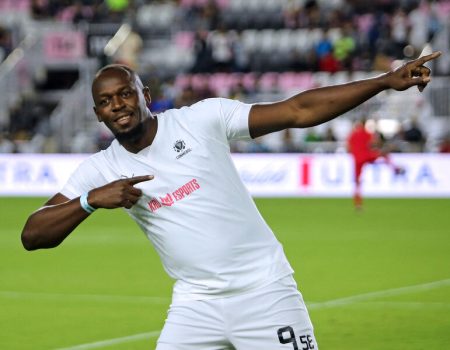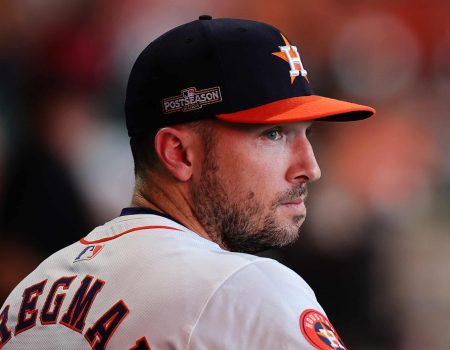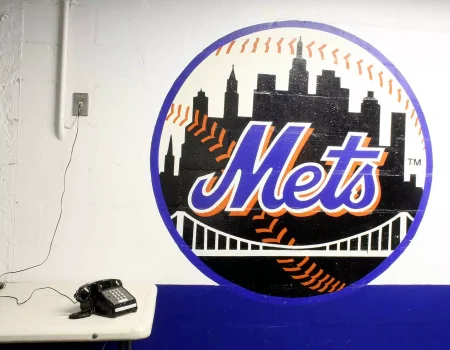OK, we can probably all agree that the USA has been the center of the basketball universe since . . . forever. Notice that the NBA winners are called world champions, even though 29 of 30 teams are from the same country. The sport wasn’t officially included in the Olympics until Berlin in 1936 and then the games were played outdoors on a clay tennis court. That was eight years after Butler University in Indianapolis was driven to build a giant and stately new fieldhouse, mostly to have room for the mammoth crowds of the state high school tournament.
Yet the game has had an international flavor from the time the first shot bounced off the first peach basket. Remember, the guy who invented it was a 5-10 physical education teacher from Canada.
? SCOREBOARD: All DI men’s basketball scores
When the United Nations sponsors World Basketball Day on December 21, it will be celebrated on a planet united by the love of dunks and 3-pointers, if not a lot else. America might be hoop’s hottest bed, but the world long ago joined the game and now is fully engaged. There are gobs of examples.
Dr. James Naismith’s idea, born in a Massachusetts YMCA in 1891, is not that old, as sport goes. The day he first came up with 13 original rules for basketball, there had already been 31 British Opens and 17 Kentucky Derbys. The Cincinnati Red Stockings had been playing professional baseball for more than two decades. But the game quickly established its roots in the United States, and so did its creator. Naismith would eventually direct the Kansas Jayhawks program and to this day remains the only coach to ever leave the job with a losing record. Even the father of the game needed talent to win.
And now just look at how his brainchild has echoed around the globe 132 years later. That’s what Dec. 21 is all about.
Know where the first-ever NBA game was played in 1946? Neither New York nor Boston nor Philadelphia. But Toronto. The hometown Huskies lost to the New York Knickerbockers 68-66. The Toronto team included 6-8 George Nostrand and to hype the crowd, the Huskies promised free admission to anyone who was taller. The game drew 7,090.
? UPSET: Seton Hall downs No. 5 UConn 75-60
Seventy-three years later, the Toronto Raptors would take the NBA title; a team from Canada getting big minutes from men who were natives of Cameroon, Republic of the Congo, Spain and Southern California, and led by a coach from Iowa. Can’t get much more global than that.
That was part of the ongoing proof that international players could not just take part, but thrive. Hakeem Olajuwon lead the Houston Rockets to consecutive NBA championships. Later would come other familiar winners from distant places; a Dirk Nowitzki here, a Nikola Jokic there, a Giannis Antetokounmpo somewhere else. The San Antonio Spurs built a dynasty on a foundation of imports. Manu Ginobili was born in Argentina, Tim Duncan in the U.S. Virgin Islands, Tony Parker in France. And now they look for revival with France’s Victor Wembanyama.
There were only five non-American born players in the NBA that first year in 1946. The current season began with 125 international players from 40 different countries and six continents. The last five MVP awards in the NBA have gone to players born in Serbia (Jokic), Greece (Antetokounmpo) and Cameroon (Joel Embiid).
The women have seen a similar trend. There have only been two three-time MVPs in the history of the WNBA and Lauren Jackson is one of them. She’s from Australia. Three of the first five No. 1 draft picks in the WNBA were from Poland (Margo Dydek), Belgium (Ann Wauters) and New South Wales (Jackson).
College basketball, too. One of the greatest championship game collisions between big men came in 1984, Georgetown vs. Houston. Patrick Ewing vs. (then named) Akeem Olajuwon. A gifted post player born in Jamaica against a gifted post player born in Nigeria. Ewing won, as Houston dropped its second consecutive title game. Olajuwon is the last player from a non-champion team to be named Most Outstanding Player of the Final Four, and we’re now talking four decades. He can also claim the special distinction of getting drafted two spots ahead of Michael Jordan.
Consider the recent landscape. Arizona is No. 4 on the men’s side, and there are eight countries represented on the Wildcats’ roster. The nation’s most renowned player is Canada’s own Zach Edey, currently dominating the paint for No. 1 Purdue. No. 14 Florida Atlantic’s sudden rise has been partly fueled by the play of Russia’s Vladislav Golden.
South Carolina is back at its usual post at No. 1 for the women and averaging a double-double is Brazil’s Kamilla Cardoso. Washington State has players from nine countries on its roster. Last spring, the Cougars upset three ranked opponents to win the Pac-12 tournament with a starting lineup from Australia, Canada, Estonia, New Zealand and Rwanda.
➡️ RANKINGS: Women’s college basketball AP Poll
Then there’s the Olympics, where in many ways this international wave was formed.
Not necessarily with the early USA domination, taking the first seven men’s gold medals, winning 62 Olympic games in a row, flattening nearly all before it. The 1960 team with Oscar Robertson and Jerry West was so deep and strong, future Hall of Famer John Havlicek only made the roster as an alternate. The rest of the world was struggling to find its way. Iraq sent an entrant to the 1948 Games and lost a game by 100 points. Twice.
And not even with the way the USA streak ended. There was 1972’s searing controversy in Munich when the Soviet Union beat the Americans 51-50 on a last-second shot, with game officials apparently intent on giving the Russians as many attempts as they needed to finally score. When they met 16 years later in Seoul, the Soviets won again. No controversy this time. Just an 82-76 beating.
No, the journey to World Basketball Day got its Atlas rocket liftoff in 1992 in Barcelona. Jordan, Magic Johnson, Larry Bird, Charles Barkley, the Dream Team, eight wins by an average of more than 43 points, never a timeout taken. The opponents did not ask for mercy, only to pose for pictures with the American stars before the beating.
The world watched in admiration and awe, and then the world picked up a basketball and started working on its own basketball dreams. Just 10 years later, the USA would finish sixth in the World Championships, played in Indianapolis for heaven’s sake. In 2004, the American men could only get a bronze medal in the Olympics. They have won every gold since but it has been a struggle, such as in 2020, holding back France by five points.
There were only 23 international players on NBA rosters to begin the 1991-92 season. Then came the Dream Team. Now more than a fourth of the league is from somewhere else. No draft choice in recent memory has come with more expectations than Wembanyama.
The USA women have their own Olympics roll going, winning the past seven golds and 55 games in a row. But given the influx of international talent into the college game, such complete domination will be harder and harder to maintain.
So World Basketball Day should include a thank you to that unassuming Canadian. James Naismith lived to see his game take hold. He visited Indiana, where basketball became a way of life. He awarded the American men the gold medal in the 1936 Olympics. He saw the NCAA tournament born in 1939. But eight months later he was gone, now buried in Lawrence, three miles from Allen Fieldhouse.
You have to think he would have loved Dec. 21. A day to remember how you can go nearly anywhere on Earth, and hear a bouncing basketball.














Yorum Yok İlk Yorum Yapan Siz Olun!